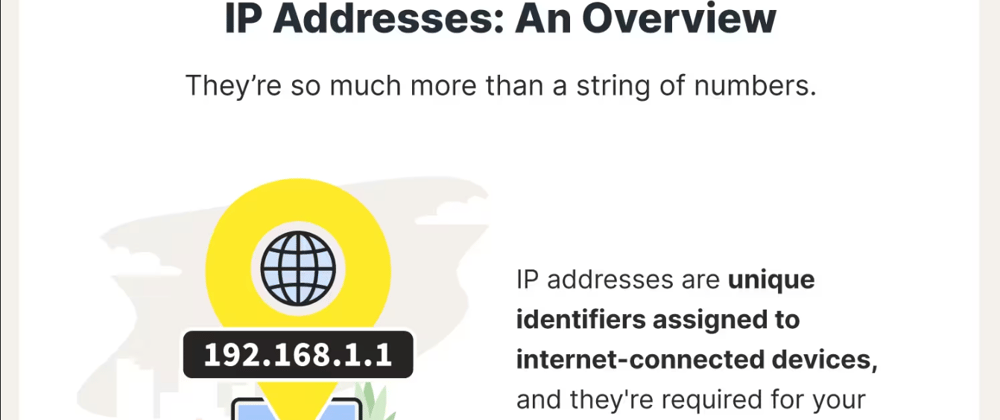Decoding the Digital Matrix: An In-Depth Guide to IP Addresses
Introduction
In the vast landscape of networking, IP addresses serve as the cornerstone, facilitating communication between devices across the globe. Understanding IP addresses is crucial for anyone delving into the realm of networking or even just curious about how the internet works. This article aims to provide a comprehensive guide to IP addresses, covering everything from their basics to more advanced concepts.
What is an IP Address?
An IP (Internet Protocol) address is a numerical label assigned to each device participating in a computer network that uses the Internet Protocol for communication. It serves two primary purposes: identifying the host or network interface and providing the location of the device in the network.
Types of IP Addresses
IPv4 Addresses: The most widely used version, IPv4 addresses are 32-bit numbers typically expressed in dotted-decimal notation (e.g., 192.168.1.1). However, the proliferation of devices has led to IPv4 address exhaustion.
IPv6 Addresses: To address the limitations of IPv4, IPv6 was introduced, offering a significantly larger address space with 128-bit addresses (e.g., 2001:0db8:85a3:0000:0000:8a2e:0370:7334).
How IP Addresses Work
IP addresses facilitate communication by providing a unique identifier to each device on a network. When a device sends data, it is routed based on the destination IP address, allowing it to reach the intended recipient. This process involves several components, including routers, which forward packets between networks, and protocols such as TCP (Transmission Control Protocol) and UDP (User Datagram Protocol), which govern data transmission.
IP Address Allocation
IP addresses are allocated by various entities, including Internet Service Providers (ISPs) and regional internet registries (RIRs). The allocation process follows specific guidelines set by the Internet Assigned Numbers Authority (IANA) and the respective RIRs, ensuring efficient use of address space.
IP Address Classes
Historically, IPv4 addresses were divided into five classes (A, B, C, D, and E), each with a different range of addresses and intended purpose. However, classful addressing has largely been replaced by Classless Inter-Domain Routing (CIDR), which allows for more flexible allocation of IP addresses.
Subnetting and CIDR Notation
Subnetting involves dividing a single network into multiple smaller networks, each with its own subnet mask and range of IP addresses. CIDR notation is used to represent these subnets, specifying the network address followed by a forward slash and the subnet mask's prefix length (e.g., 192.168.1.0/24).
Public vs. Private IP Addresses
Public IP addresses are globally unique and routable on the internet, allowing devices to communicate across different networks. In contrast, private IP addresses are reserved for use within private networks and are not directly accessible from the internet. Network Address Translation (NAT) is used to translate between public and private IP addresses.
FAQs
Q: Can two devices have the same IP address?
A: No, each device on a network must have a unique IP address to ensure proper communication. Duplicate IP addresses can lead to network conflicts and connectivity issues.
Q: How do I find my IP address?
A: On most devices, you can find your IP address by accessing the network settings or using commands like ipconfig (Windows) or ifconfig (Unix/Linux) in the command line interface.
Q: What is DHCP?
A: DHCP (Dynamic Host Configuration Protocol) is a network protocol that automatically assigns IP addresses and other network configuration parameters to devices on a network, simplifying network administration.
Conclusion
In conclusion, IP addresses play a fundamental role in modern networking, enabling devices to communicate with each other across the internet. By understanding the basics of IP addressing, subnetting, and allocation, individuals can gain insights into how data is transmitted and routed in the digital world.
Understanding IP addresses is not just for network administrators but for anyone seeking to comprehend the infrastructure that underpins the interconnectedness of the modern world. Whether you're setting up a home network or troubleshooting connectivity issues, a solid grasp of IP addressing is invaluable.







Top comments (0)